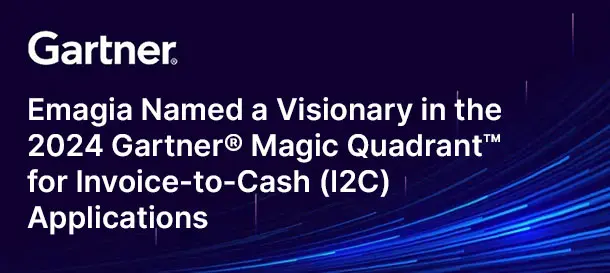Can CFOs Save Media Margins in a Streaming-First World?
Imagine broadcast and pay-TV revenues plunging by $42 billion between 2024 and 2029, while streaming soars by $93 billion (41%). That’s the forecast from Caretta Research reported via TV Technology. Meanwhile, Paramount Global’s Q2 2025 TV media revenue fell 6%, even as its streaming revenues rose 15% YoY to $2.2 billion, amid subscriber losses.
For Media & Entertainment CFOs, these trends sound the alarm: traditional (re: heavily manual) finance systems can no longer keep pace. This blog explains:
- The financial disruption affecting M&E
- Why linear TV revenue is collapsing and what’s really fuelling streaming
- How modern CFOs are turning to Autonomous Order-to-Cash (O2C)
- How Emagia’s platform can deliver measurable improvements in cash flow and efficiency
A Perfect Financial Storm: The Collapse of Traditional TV Revenue
Broadcast and pay-TV revenues are in decline. According to Caretta Research, they will shrink by $42 billion by 2029, while streaming will grow by $93 billion (41%)—a structural shift in global media monetization.
This decline is far from theoretical. In Q2 2025, Paramount Global reported a 6% drop in linear TV media revenue ($4.0 billion), driven by lower ad spending and subscriber attrition as viewers increasingly cut the cord. At the same time, streaming revenue (Paramount+) grew 15% YoY—to $2.2 billion, despite losing about 1.3 million subscribers due to an expiring international bundle deal.
Why Streaming Growth Alone Isn’t Enough
The narrative looks positive, streaming is rising while linear falls, but it masks deeper problems:
- High content costs and churning subscribers: Paramount’s strong streaming growth came alongside subscriber losses, underscoring retention issues
- Complex revenue cycles: Ad-supported, subscription-based, agency invoicing, and licensing payments all flow in fragmented, delayed ways, making finance coordination difficult.
So, while streaming revenue increases, profitability and cash flow remain challenging without efficient finance operations.
CFO Imperatives: Why Autonomous O2C Is Now Non-Negotiable
If linear revenue is decreasing and streaming complexity rising, CFOs must adopt new standards for their Order-to-Cash operations:
- Understand cash flow across fragmented revenue channels in real time
- Speed up invoice-to-cash cycles, even with incomplete remittance data
- Automate disputes and deductions, especially from advertisers and licensors
- Prioritize collections impactfully to preserve working capital
Heavily manual, “traditional” or “legacy” processes are too error-prone and siloed. Simply put, they fail in this increasingly dynamic market.
How Emagia’s Autonomous O2C Platform Empowers CFOs
Emagia’s finance platform addresses these CFO mandates head-on.
AI-Powered Cash Application
Automatically matches payments to invoices, even with minimal remittance details which are ideal for fragmented ad and licensing receipts.
Exception-Based Deductions Management
Automatically identifies, categorizes, and resolves disputes or promotional deducts, reducing write-offs and accelerating revenue retention.
Predictive Collections & Smart Dunning
AI-driven risk scoring helps collectors focus on high-impact accounts, with automated follow-up workflows to reduce DSO.
Customer EIPP Portal
Offers a self-service hub where agencies and advertisers can view invoices, pay, and dispute items online, speeding up payments and improving buyer experience.
Emagia transforms finance from a cost center into a strategic leverage point, especially vital when traditional revenue models collapse and streaming models fragment revenue.
Finance Must Be the Strategic Anchor for Streaming-First Media
The decline of pay-TV and rise of streaming fundamentally shifts Media & Entertainment economics. CFOs must respond, not just by adapting to new revenue patterns, but by reinventing finance itself.
With Emagia’s Autonomous Finance platform for O2C, M&E organizations can transform cash flow, reduce manual inefficiencies, and future-proof finance operations. As various media continue their digital transformation, finance can’t lag, it must lead.
FAQs:
What is cord-cutting?
Cord-cutting means consumers cancelling cable or satellite subscriptions in favour of streaming platforms, reducing linear TV revenue sources.
What is linear TV revenue?
It’s income from scheduled television broadcasts—like cable or satellite networks—derived from subscriptions and ad sales.
What is an EIPP Portal?
An Electronic Invoice Presentment and Payment portal allows customers to view and pay invoices online and manage disputes in real time.





